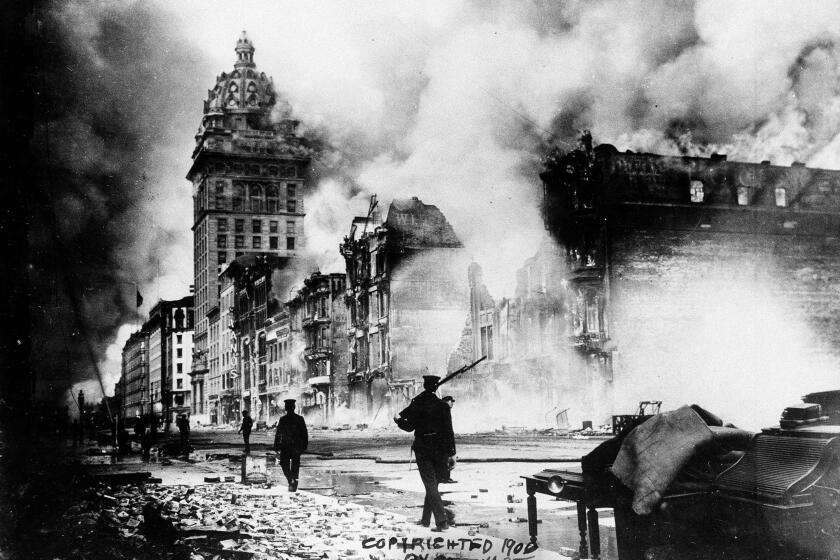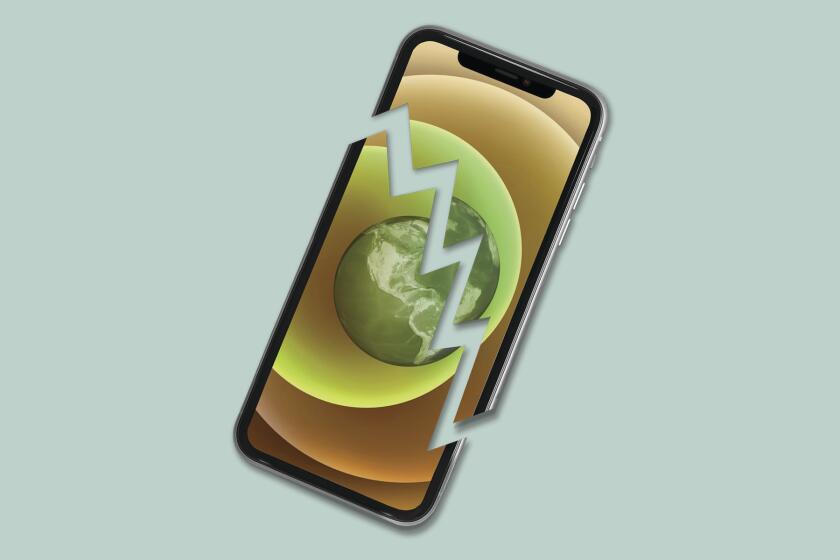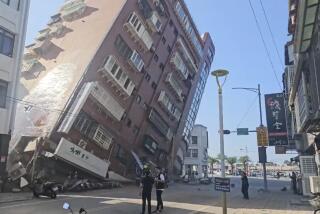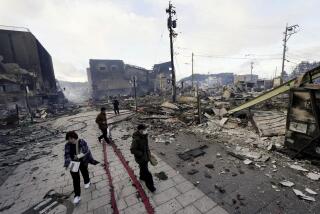At least 162 dead after earthquake topples homes, buildings on Indonesia’s Java island
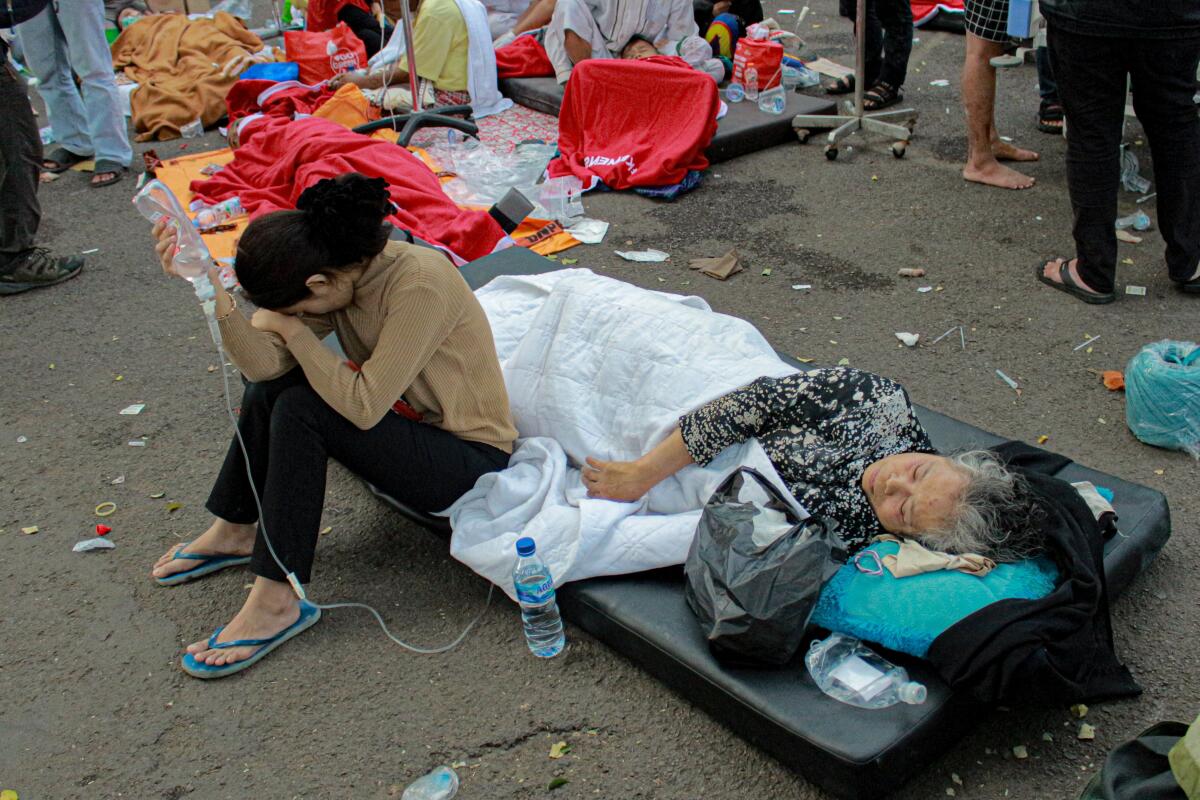
- Share via
CIANJUR, Indonesia — A powerful earthquake killed at least 162 people and injured hundreds on Indonesia’s main island on Monday. Terrified residents fled into the street, some covered in blood and debris.
Many of the dead were public-school students who had finished their classes for the day and were taking extra lessons at Islamic schools when the buildings collapsed, West Java Gov. Ridwan Kamil said as he announced the latest death toll in the remote, rural area.
Hospitals were overwhelmed by injured people, and the toll was expected to rise further. No estimates were immediately available because of the area’s far-flung, rural population, but many structures collapsed, and residents and emergency workers braced for grim news.
“Buildings were completely flattened,” said Dwi Sarmadi, who works for an Islamic educational foundation in a neighboring district.
Roughly 175,000 people live in the town of Cianjur, part of a mountainous district of the same name with more than 2.5 million people. Known for their piety, the people of Cianjur live mostly in towns of one- and two-story buildings and in smaller homes in the surrounding countryside.
Kamil said more than 13,000 people whose homes had been heavily damaged were taken to evacuation centers.
Emergency workers treated the injured on stretchers and blankets outside main hospitals, on terraces and in parking lots in the Cianjur region, about three hours’ drive from the capital, Java. The injured, including children, were given oxygen masks and IV lines. Some were resuscitated.
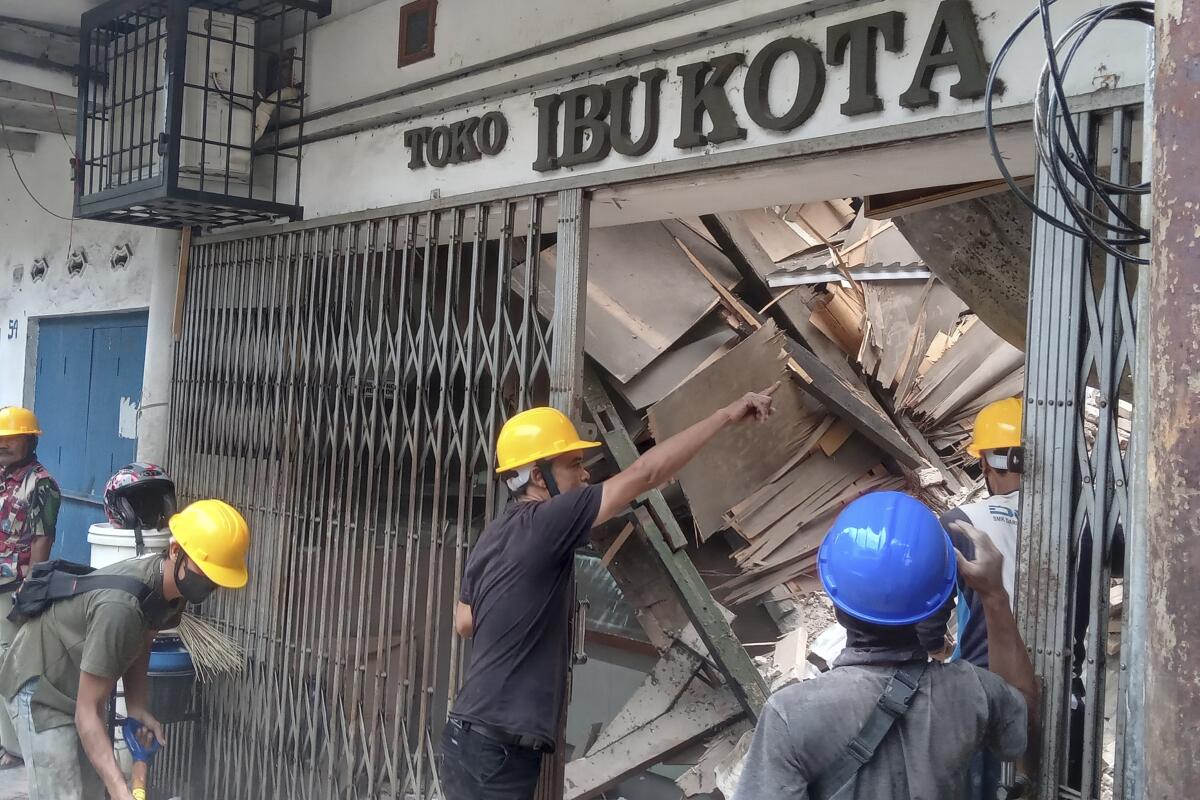
Hundreds of people gathered outside the Cianjur regional hospital building, waiting for treatment.
“I was working inside my office building. The building was not damaged, but as the quake shook very strongly, many things fell. My leg was hit by heavy stuff,” Sarmadi said.
Sarmadi was waiting near a tent outside the hospital after some overwhelmed clinics were unable to see him. Many people were coming in worse shape.
“I really hope they can handle me soon,” he said.
Hasan, a construction worker who, like many Indonesians, uses one name, is also one of the survivors being taken to the hospital.
“I fainted. It was very strong,” Hasan said. “I saw my friends running to escape from the building. But I was too late to get out and was hit by the wall.”
Residents, some crying with children in their arms, fled damaged homes after the quake shook the Cianjur region in West Java province in the late afternoon, at a depth of 6.2 miles. It also caused panic in the greater Jakarta area, where high-rises swayed and some were evacuated.
In many homes in Cianjur, chunks of concrete and roof tiles fell inside bedrooms.
New research finds that violent supershear earthquakes are more common than previously believed, particularly along mature strike-slip faults like the San Andreas.
Shopkeeper Dewi Risma was working with customers when the quake hit, and made a run for the exit.
“The vehicles on the road stopped because the quake was very strong,” she said. “I felt it shake three times, but the first one was the strongest one for around 10 seconds. The roof of the shop next to the store I work in had collapsed, and people said two had been hit.”
Twenty-five people were still stuck buried in the debris in Cijedil village, National Disaster Mitigation Agency spokesman Abdul Muhari said earlier in the day.
Several landslides closed roads around the Cianjur district. Among the dozens of buildings that were damaged was a hospital, the agency said. Power outages were reported.
Breaking News
Get breaking news, investigations, analysis and more signature journalism from the Los Angeles Times in your inbox.
You may occasionally receive promotional content from the Los Angeles Times.
Indonesia’s Meteorology, Climatology and Geophysical Agency recorded at least 25 aftershocks.
“The quake felt so strong. My colleagues and I decided to get out of our office on the ninth floor using the emergency stairs,” said Vidi Primadhania, a worker in southern Jakarta, where many residents ran into the streets and others hid under desks in their offices.
The country of more than 270 million people is frequently struck by earthquakes, volcanic eruptions and tsunamis because of its location on the so-called Ring of Fire, an arc of volcanoes and fault lines in the Pacific Basin.
Disruptions from a major quake would be serious and long-lasting. Here’s what could happen in Southern California if a large earthquake struck on the San Andreas fault.
In February, a magnitude 6.2 earthquake killed at least 25 people and injured more than 460 in West Sumatra province. In January 2021, a magnitude 6.2 earthquake killed more than 100 people and injured nearly 6,500 in West Sulawesi province.
A powerful Indian Ocean quake and tsunami in 2004 killed nearly 230,000 people in a dozen countries, most of them in Indonesia.
More to Read
Sign up for Essential California
The most important California stories and recommendations in your inbox every morning.
You may occasionally receive promotional content from the Los Angeles Times.
